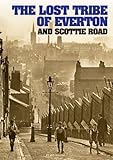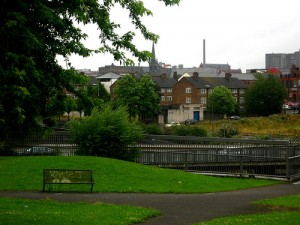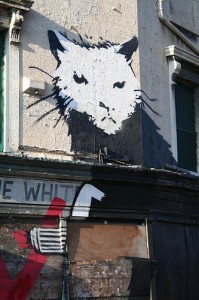New mapping websites for Liverpool history and beyond
If you follow me on Twitter you’ll already know that I’m currently writing the Croxteth Park page for Historic Liverpool. So while the blog might be a tad quiet at times, I want to share today a couple of websites: one of interest to Liverpool local history and family historians, and another which has a global scope but which may well build into a resource for the Liverpool-focused.
There’s also a map-related news story for you.
Lost Tribes of Everton and Scotland Road
The new book by Ken Rogers, The Lost Tribe of Everton & Scottie Road, covers the period when the masses of terraced housing in the northern inner suburbs of Liverpool were demolished. The communities in the area were scattered to places like Speke, Kirkby and Skelmersdale, and the houses replaced with Everton Park and the entrance to the Kingsway Tunnel.
Ken went through the electoral role for 1960 to find all the people who lived in the now-gone communities, and collected memories and stories for his book.
The amazing thing about the companion website (and a brilliant example of how to use the Internet to accompany a traditional book) is that you can actually search for the people in the ‘lost tribe’ by family surname or the name of the street they lived in. One thing to note, however: make sure you click on the Search tab to be taken to the search page first. I found that the home page search didn’t work for me.
This site is a great resource for family history as well as people who want to reconnect with those they used to live near. There’s an active discussion going on at the site, so do pop along and report back if you rekindle any long-lost friendships!
A lot of the stories are also of course collected in the book itself. And best of all the website has a string of old maps and photos of the area. Might come in useful when I come to be updating the history of Everton page next.
SepiaTown
I found this site via Seb Chan, who’s known in the Museum world for his work bringing archives and exhibits to the wider public through the Internet.
SepiaTown is a site which maps photos, video and audio clips. It wants users (including museums and similar organisations) to upload their old photo collections for the entire world to gain the benefit.
It’s best collections are in places like London, New York and, partly due to the work of Seb Chan and colleagues, Sydney. However, there’s a couple of photos around – though not in – Liverpool (just type it into the search box, then zoom out) and if anyone has any more images they’d like to share, this number will increase.
I have a handful of old postcards which I keep meaning to scan in, so perhaps I can lend a hand.
Memories of Park Lane
And if you’re feeling a bit left out with talk of the northern suburbs, National Museums Liverpool could have the answer for you. They are looking to hear from people with memories of living near the southern and central docklands from the 1950s to 1970s.
The Mapping Memory project team ran a workshop at Doreen’s Cafe last month, focussing on Park Lane. They recreated the landmarks (pubs and shops etc) on a map as part of the project. The project page on the Maritime Museum website gives more detail. More for you to contribute to!
Further Reading
 Ken Rogers’ book The Lost Tribe of Everton & Scottie Road is available now through Amazon. If I’ve whetted your appetite for exploring the area and you’d like to support this blog, please click on the book cover to buy it through my Amazon affiliate link.
Ken Rogers’ book The Lost Tribe of Everton & Scottie Road is available now through Amazon. If I’ve whetted your appetite for exploring the area and you’d like to support this blog, please click on the book cover to buy it through my Amazon affiliate link.





